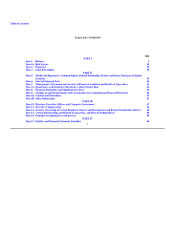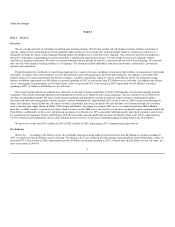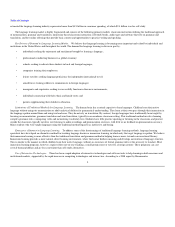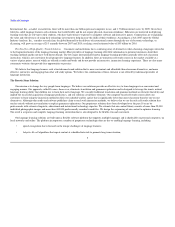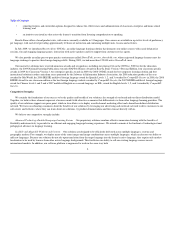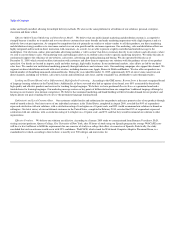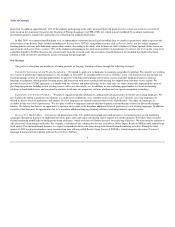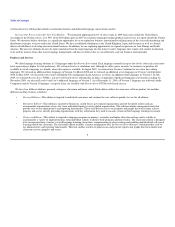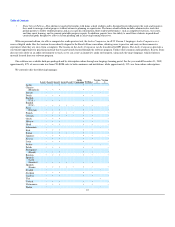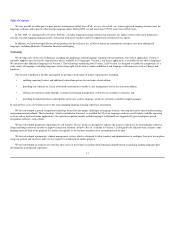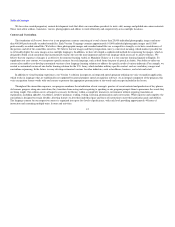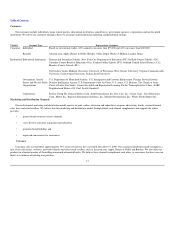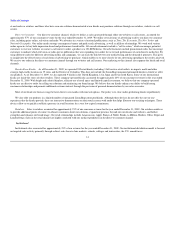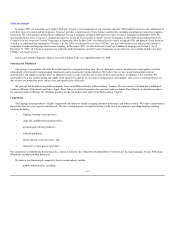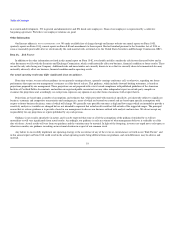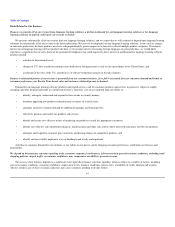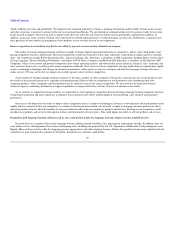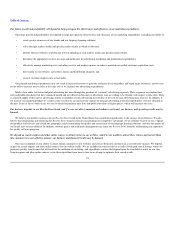Rosetta Stone 2009 Annual Report Download - page 13
Download and view the complete annual report
Please find page 13 of the 2009 Rosetta Stone annual report below. You can navigate through the pages in the report by either clicking on the pages listed below, or by using the keyword search tool below to find specific information within the annual report.
Table of Contents
We also provide an online peer-to-peer practice environment called SharedTalk, at www.sharedtalk.com, where registered language learners meet for
language exchange and to practice their foreign language skills. During 2009, we had more than 125,000 active SharedTalk users.
In July 2009, we introduced Rosetta Stone TOTALe, an online language learning solution that integrates our online courses with coach-led practice
sessions, fun and engaging language games, interaction with native speakers and live support from customer service agents.
In addition, we have developed Rosetta Stone products for the exclusive use of Native American communities to help to save their endangered
languages, including Mohawk, Chitimacha, Innutitut and Iñupiaq.
Technology
We develop most of our own technology, including our proprietary unified language learning software platform. Our newest application, Version 3,
currently supports up to five levels of proficiency and is available in 25 languages. Version 2, our legacy application, is available for our other 6 languages.
We intend to offer additional languages on Version 3. The technology underlying both Version 2 and Version 3 is designed to handle the complexities of a
wide variety of languages, including languages written from right-to-left such as Arabic and Hebrew and languages with characters such as Chinese and
Japanese.
Our Version 3 platform is flexible and capable of meeting a wide range of market requirements, including:
enabling reporting features and additional curriculum options for our home school edition;
providing our solutions in a local networked environment to enable a class management tool in the classroom edition;
offering our solutions online through a commercial learning management system for our enterprise customers; and
providing localized interfaces and help files in the user's native language, which are currently available in eight languages.
In each of these cases, the learner receives the same engaging language learning experience and content.
We have developed a speech recognition technology focused on the unique challenges of language learners, stressing non-native speech understanding
and pronunciation feedback. This technology, which is included in Version 3, is available for 25 of our languages and runs on all widely available operating
systems and on local and online applications. Our speech recognition models include languages traditionally not supported by general-purpose speech
recognition software, such as Irish.
We have developed proprietary algorithms we call Adaptive Recall, which are designed to enhance the learner's experience by reintroducing content at
longer and longer intervals in order to improve long-term retention. Adaptive Recall, available in Version 3, is designed to be efficient with a learner's time,
bringing material back in the program less and less frequently as the learner remembers over extended periods of time.
We have developed a proprietary student management system, which is designed to allow teachers and administrators to configure their own lesson plans
using our content and exercises and to review reports for evaluation of student progress.
We have developed an intuitive user interface that assists in the learner's transition from listening comprehension to speaking, making language skill
development an integrated experience.
11
•
•
•
•



